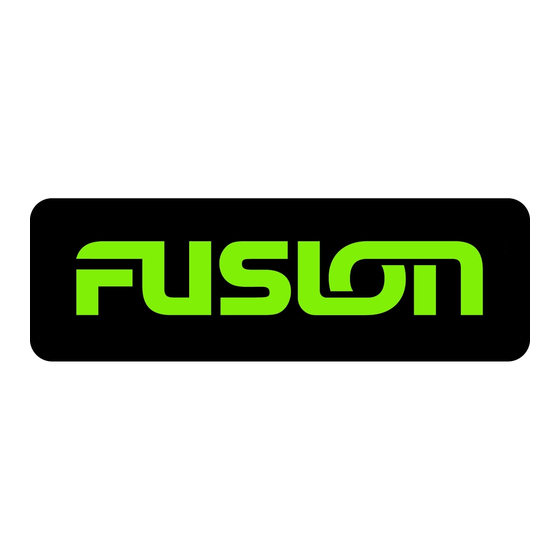
Table of Contents
Advertisement
Quick Links
SCOT
INSTALLATION
INCLUDES
INSPECTION
Check pump for shortage and damage immediately upon
arrival. Note damage or shortage on freight bill (bill of
lading); immediately file claim with carrier.
EXTERIOR
— Pay particular attention to conduit box,
external hardware and accessories. Touch up abrasions
or scratches with approved paint.
INTERNAL
— If extensive or serious external damage
is noted, if impeller is damaged (look in ports), or if shaft
binds or sticks, disassemble as required to permit
internal inspection.
HANDLING
Handle with care.
Dropping or jarring can seriously
damage motor bearings or break pump parts. Lift with
device having capacity for pump weight, and use lifting
hooks or eye bolts (if provided) or rig double sling around
motor frame and pump casing. Do not use sling through
pump motor adapter nor around suction and discharge
flanges.
INSTALLATION
Location
— Pump location should provide the
following:
1.
Install as close to suction supply as possible.
2.
Shortest and most direct suction pipe practical.
Suction lift must not exceed limit for pump. NPSH
available must equal or exceed pump requirement.
3.
Suction port below pumping level to provide priming.
4.
Room for inspection and maintenance.
5.
Correct power supply to motor; all wiring should
meet National Electrical and Local Codes and
Regulations.
6.
If outdoors, protection from the elements, freezing
and water damage due to flooding.
Piping
— Suction and discharge gauges are useful to
check pump operation and are excellent trouble
indicators. Install gauges in the lines if pump ports do not
have gauge taps.
Observe these precautions when
installing piping:
• Cedarburg, WI 53012
Replaces Jan 2005
MOTORPUMP™
MECHANICAL
SCOT DIVISION OF ARDOX CORP. — HOME OFFICE
• P.O. Box 286
STRAIGHT CENTRIFUGAL
1.50" & 1.75" TYPE 21 MECHANICAL SEALS
SEAL
REPLACEMENT
1.
Support close to, but independently
of pump.
2.
Use the next larger pump size for suction
and discharge.
3.
Keep as straight as possible. Avoid bends
and fittings.
4.
Remove burrs, sharp edges, ream pipe cuts, and
make joints air-tight.
5.
Don't spring pipe to make connections.
Strain must not be transmitted to pump.
6.
Allow for pipe expansion with hot fluids;
expansion joints are not recommended.
Suction
— Size and install suction piping to keep
pressure loss at minimum and to provide correct NPSH
by observing the following:
1.
The suction pipe should be equal in size or
preferably one size larger than the suction
connection of the pump. If pipe is larger than the
pump suction, an eccentric pipe reducer should be
used at the pump.
2.
Pipe should slope upward to pump, even for
horizontal run.
3.
Use 45-degree or long-sweep 90-degree elbows.
4.
A valve in the suction is necessary only on positive
suction head installation and must not be used to
throttle the pump. The suction valve should be
installed for maintenance purposes only.
Discharge —
Pumps permit discharge port location at
any of four positions, 90 degrees apart.
removing cover bolts, rotate casing, and replace bolts.
Do not slice O-ring or tear fibre gasket. Scot does not
recommend bottom vertical discharge due to erratic
pump performance. Ensure there is adequate clearance
with selected position between wall or tank, motor
conduit box, and grease fittings.
beyond base or feet.
1.
Short discharge lines may be the same size as the
discharge port. Long runs require a pipe larger
than the discharge port.
2.
Long horizontal runs require a grade as even as
possible. Avoid high spots and loops. Trapped air
will throttle flow and may result in erratic pumping.
• 262-377-7000
C56 & JM FRAME
MAINTENANCE
Change by
Casing may extend
• FAX 262-377-7330
61.000.252
NOVEMBER 2009
Advertisement
Table of Contents

Subscribe to Our Youtube Channel
Summary of Contents for Fusion SCOT MOTORPUMP C56
- Page 1 SCOT MOTORPUMP™ C56 & JM FRAME STRAIGHT CENTRIFUGAL 1.50” & 1.75” TYPE 21 MECHANICAL SEALS INSTALLATION OPERATION MAINTENANCE INCLUDES MECHANICAL SEAL REPLACEMENT Support close to, but independently INSPECTION of pump. Check pump for shortage and damage immediately upon Use the next larger pump size for suction arrival.
- Page 2 INSTALLATION, CONT. MAINTENANCE Install check and gate valves in discharge line; Cleaning — Remove oil , dust, dirt, water, chemicals check valve (if used) between pump and gate valve. from exterior or motor and pump. Keep motor air inlet and outlet open. Blow out interior of open motors with OPERATION clean compressed air at low pressure.
- Page 3 8. Remove impeller from shaft, being stationary seat. Do not chip or scratch faces careful not to lose the impeller key, spring during installation. Take extra care to make and seal retainer. If impeller is difficult to sure the lapped faces are clean. Install seal remove, it may be necessary to use a spring on seal head and retainer on spring.
- Page 4 and opposite side of stub shaft. See shaft and the rubber bellows of the rotary Figure 2. seal. Slide the seal head on the stub; press E.) Install pin the rubber drive band on the rotary head until the lapped face on the head seats firmly against the lapped face of the 3 3/32”...
Need help?
Do you have a question about the SCOT MOTORPUMP C56 and is the answer not in the manual?
Questions and answers